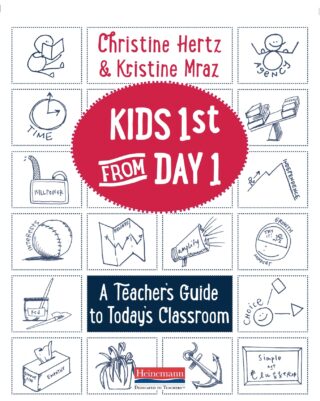
The following is adapted from Kids First From Day One Appendixes.
- Start from the basic assumption that all caregivers are trying to do their best for their child. For some, this might mean they work multiple jobs to provide for them and can’t assist with homework; for others, this means they help too much with homework because they think that is best. We have never met a caregiver who is not trying the best they know how. Sometimes it falls on us to help him or her see other ways to do so.
- Own the mindset that we don’t just have a certain child in our class, we have a whole family along with that child. When we provide families with strategies that support organization, social skills, and instruction, we have a better chance of impacting a child in the long term. Blogs and newsletters that provide classroom charts, step-by-step strategies, and how-to videos filmed by kids can help do this. (See Amplify by Katie Muhtaris and Kristin Ziemke [2015] for more on technology in the classroom.)
- Though we may be the experts on instruction, families are the experts on their children. Don’t just ask questions, use the answers. If you learn a child tends to nap on the weekends, that may tell you they need a rest after lunch in the classroom. If you learn a child only sees a specific caregiver on Tuesdays, you may learn that Tuesdays can be challenging days for her.
- Do you teach a child with challenging behaviors? Be honest and objective with the family. It is not about the child as a person, it is about the behaviors he employs. A child is never bad, but his behaviors may be counterproductive to learning and getting along with others. Keep conversations centered on actionable, changeable aspects of behavior, and not about the child as a human being.
- Make your room a community space! If your school allows it, have families come in for projects or celebrations or just to watch the classroom in action. If possible, vary the times and days of the week, or have a sign-up so that working families can find a time and day that works for them. Give as much advance notice as possible so that families can try to take time off work.
- Offer various forms of communication. Not all families will have access to computers, and smart phones may have limited data plans. We are a huge fan of blogs, twitter, and email, but you may also want to provide printouts of any electronic communication for those who need them.
Build relationships. This seems obvious, but it is not always easy when your plate is so full. Celebrate as a community when a baby is born, a tooth is lost, or someone gets a new job. Likewise, offer your sympathies when a loss happens, or difficulties occur. This is not to say you should pry, but rather see families as people first and partners in your job. Be warm, be welcoming, be humane.



